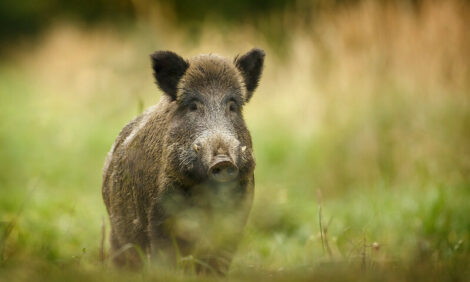



Indiana, Michigan, and Ohio Swine Nutrition Guide
By Tri-State Universities - This publication is intended to estimate the nutrient requirements of swine by considering the regional conditions within the tri-state area of Indiana, Michigan, and Ohio. In the discussion section of each production phase, we reviewed the various physiological, genetic, and environmental factors that can affect the pig's nutrient requirements.
Also included is a listing of feeds that are commonly available in this region, their compositions and nutrient availabilities when appropriate, and the effect that processing has on their feeding value. Factors that can affect the composition of the diet are identified in Figure 1.
After evaluating the pig's nutritional requirements and why the requirements change between each production phase, we focused on answering frequently asked questions by considering different management practices, types of facilities, genetics, production stages, and feed ingredients.
The swine nutritionists at each of the three universities (Michigan State University, The Ohio State University, and Purdue University) met several times to prepare this publication and then consulted with several industry and Extension specialists in the tri-state area for their critique.
Animal Science Department: Maynard Hogberg
Swine Nutritionists: Gretchen Hill, Dale Rozeboom, Nathalie Trottier
Ohio State University
Animal Science Department: David Zartman
Swine Nutritionist: Don Mahan
Purdue University
Animal Science Department: Jeff Armstrong, Bud Harmon
Swine Nutritionists: Layi Adeoli, Tip Cline, Dale Forsyth, Brian Richert
Copyright © The Ohio State University 1998
After evaluating the pig's nutritional requirements and why the requirements change between each production phase, we focused on answering frequently asked questions by considering different management practices, types of facilities, genetics, production stages, and feed ingredients.
The swine nutritionists at each of the three universities (Michigan State University, The Ohio State University, and Purdue University) met several times to prepare this publication and then consulted with several industry and Extension specialists in the tri-state area for their critique.
Authors
Michigan State University:Animal Science Department: Maynard Hogberg
Swine Nutritionists: Gretchen Hill, Dale Rozeboom, Nathalie Trottier
Ohio State University
Animal Science Department: David Zartman
Swine Nutritionist: Don Mahan
Purdue University
Animal Science Department: Jeff Armstrong, Bud Harmon
Swine Nutritionists: Layi Adeoli, Tip Cline, Dale Forsyth, Brian Richert
Contents
Below are the list of contents and links to each article in this booklet. To access the relevant information simply click the link. Use the navigation in the bottom left-hand corner of each article to move forward or back one article.- Foreword
- Introduction
- Nutrient and Nutrient Utilization
- Pig Growth and Development
- The Newborn and Nursing Pig
- The Starter Pig
- The Grower-Finisher Pig
- The Replacement Gilt
- The Gestating and Lactating Sow
- The Boar
- Feed Ingredients
- Feed Additives
- Antibiotics and Antimicrobial Agents
- Copper Sulfate
- Zinc Oxide
- Acidifiers
- Chromium Picolinate
- Betaine
- Carnitine
- Beta Agonists or Repartitioning Agents
- Counteracting Mycotoxins and Mold-Inhibiting Agents
- Feed Flavors, Chocolate, or Special Feeds That Pigs Prefer
- Yucca Plant Extract
- Microbial Cultures
- Enzymes
- Phytase
- Laxatives in Sow Diets
- Anthelmintics (Dewormers)
- Organic Selenium (Yeast)
- Questions and Answers for the Feed Additive Section
- Feed Processing
- Mycotoxins
- Citations
Copyright © The Ohio State University 1998








